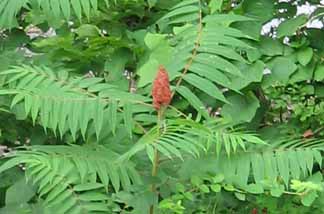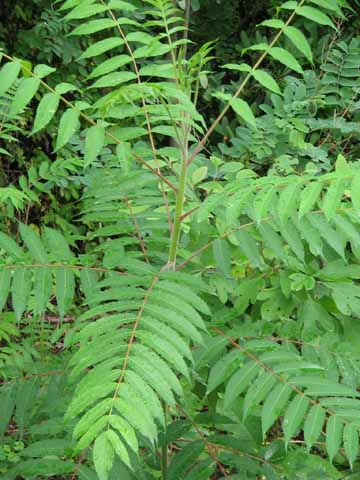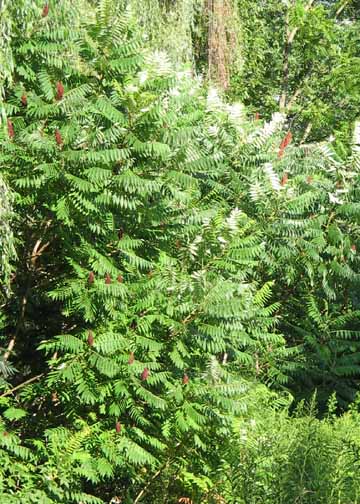Plants and People Project
Sumacs - Rhus
Native American peoples dried the berries for winter use. They used the leaves the leaves and fruit for skin skin diseases. NativeTech.org
Sumac was combined with bark of the white pine and slippery elm to make a medicine to treat TB. How Indians Use Wild Plants for Food, Medicine and Crafts.
The crushed red berries make an enjoyable drink called Sumac-ade. Sumac bark and foliage are rich in tannin a chemical used in tanning leathers. Audubon Field Guide to Trees of the Eastern Region
The roots, barks and leaves were used to create brown and black dyes. It was highly prized as a mordant. A mordant is a substance used to set dyes. .Natural Dyes and Home Dyeing
The berries of the tree are food for birds and other wildlife. Animals also use the dense thickets of these trees for shelter and as nesting sites to raise their young.
Take great care to avoid poison sumac.
Sumac forms colonies so it is best planted at the far edge of the garden or yard.

Sumac Berry cluster
DISCLAIMER: These pages are presented solely as a source of INFORMATION and ENTERTAINMENT. No claims are made for the efficacy of any herb nor for any historical herbal treatment. In no way can the information provided here take the place of the standard, legal, medical practice of any country. Additionally, some of these plants are extremely toxic and should be used only by licensed professionals who have the means to process them properly into appropriate pharmaceuticals. One final note: many plants were used for a wide range of illnesses in the past. Be aware that many of the historical uses have proven to be ineffective for the problems to which they were applied.
Identification and other facts / More facts / Further Facts
Sumac

Sumacs have compound leaves that have 15 to 23 leaflets.
